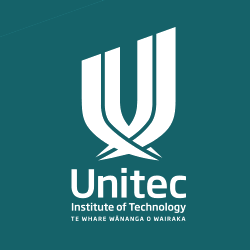
PROJECT
Assessment of Industry-Based Learning: A Self-Assessed Approach to Learning
Supporting learners,
Teaching strategies,
Assessment
Status
Completed: 6 June 2010
Project Details
A project completed in 2010, undertaken by Unitec New Zealand, to describe a process through which industry-based learning (IBL) has been effectively assessed in a Bachelor of Business programme at Unitec New Zealand.
Aims:
The main aims of the project were to:
- describe a process to assess industry-based learning, which consists of eight stages and is guided by four principles: self-assessment, teacher validation, learning outcomes, and student portfolio
- discuss the implementation of practice-based learning (including a portfolio approach) which has been shown to result in effective assessment of work-based learning and enhance learner self-assessment.
Methodology:
The project used a mixed methods approach, both quantitative and qualitative, to gauge the success of the portfolio assessment model in terms of the benefits to student learning. The approach included:
- a questionnaire survey of 28 host employers at the end of Semester One (71% response rate)
- a questionnaire survey of 28 students at the end of Semester One (79% response rate) and 33 students at the end of Semester Two (61% response rate)
- in-depth interviews with six students
- three focus groups involving nine academic supervisors
- a review of a sample of six completed student portfolios.
Team

Diana Ayling
Unitec New Zealand
Dave Hodges
Unitec New Zealand
Prue Cruickshank
Unitec New ZealandStatus
Funding
$3,600.00 (excl GST)
$3,600.00
Good Practice Publication Grant
Key Findings
The key findings from the project included:
- The formative feedback provided through the ‘long conversations’ during the placement period enabled students to gain a good understanding of their workplace performance. Students felt this enhanced their confidence in self-assessing their performance before the collaborative assessment meeting.
- Previously, marks were allocated to student workplace performance at the collaborative assessment meeting. Removal of these marks in the portfolio model forced greater emphasis on qualitative feedback, which enabled students to gain a more in-depth understanding of their performance and professional development needs.
- The portfolio model was developed to empower students to take responsibility for their own learning and to determine achievement of outcomes and professional development needs. This mirrors the reality of being a self-regulating professional in the workplace. In relation to the self-assessed grades, a review of the final grades awarded following moderation showed that nearly 80% of students were reliably able to self-assess the adequacy of their portfolio evidence to demonstrate achievement of the learning outcomes.
- A likely contributor to students’ ability to reliably self-assess their performance was their firm belief that they had increased their self-confidence. Given their increased awareness of those competencies considered important in the workplace, it is likely that students also increased their self-efficacy.
- By reflecting on their experiences students were able to identify a range of important learning experiences, both personal and professional. A common feature of students’ learning journals was their gradual coming to know. They moved from descriptive writing in the early weeks, to reflective writing in the later weeks, as they began to question their experiences and take greater notice of things around them.
- The portfolio enabled diversely experienced students, many of whom have English as an additional language, to express their views, feelings, and thoughts. A common feature of such expressions was the noticeably informal aspects of workplace culture, particularly the communicative aspects of daily work life.
Key Recommendations
The key recommendations from the project were:
- Utilise the portfolio assessment model | Portfolios are becoming a popular assessment tool in cooperative education and practice-based learning courses because they are able to capture the complex learning and personal development students experience. The Industry Based Learning course (IBL) was developed to embrace these complexities and to recognise the variable influences on learning that students encounter in the workplace. These variables included: the length, structure and work objectives of the placement; the quality of the support and mentoring provided by academia and the workplace; the contextual and socio-cultural influences of the workplace; and the background, culture, experience, competencies, motivation, goals, and aspirations of the student.
- Foster student responsibility for learning and professional development | Portfolios combine theory and practice and are used in diverse disciplines to foster student responsibility for learning and professional development. While portfolios are useful at advanced study levels, they can be used anywhere in a learning programme. Portfolio models encourage deep learning through reflection and self-evaluation; they underpin the autonomous learning required by self-regulating professionals.
- Take advantages of the benefits of the portfolio assessment model | Portfolios can provide students with: a powerful sense of achievement; a greater understanding of their strengths and areas for future development; the freedom to express what they believe they have learned in their own way; a vehicle to capture and document their unique learning experiences; a framework for the collection of evidence of their learning from multiple sources; and an opportunity to use their creativity and originality to present evidence of their performance and learning.
A research report prepared by Diana Ayling, Dave Hodges, and Prue Cruickshank
(PDF, 414KB, 10-pages)
- 6 June 2010